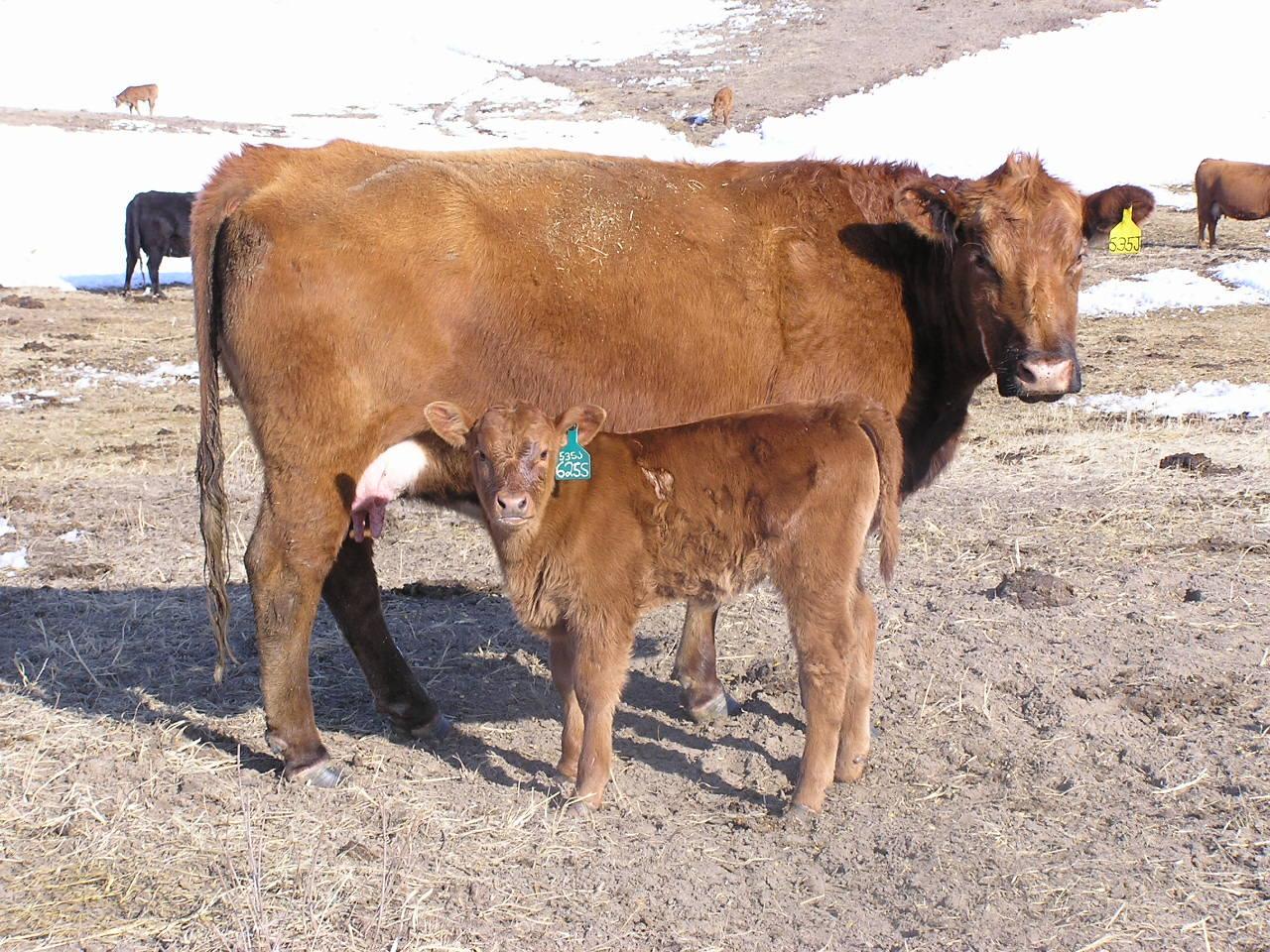
By Aaron Berger, Nebraska Extension Educator
Two research studies at the University of Nebraska by Dr. Rick Funston, beef reproductive physiologist at the West Central Research and Extension Center, suggest that the key information needed to identify heifers most likely to be successful as replacements is known the day the heifers are born.
The 2012 Nebraska Beef Cattle Report “Effect of Calving Period on Heifer Progeny” (http://go.unl.edu/qgai) and the 2016 Nebraska Beef Cattle Report “Effect of Dam Age on Offspring Productivity” (http://go.unl.edu/9b2c) demonstrate that the date in a calving season when a heifer is born, as well as the age of her dam, significantly influence her success in becoming pregnant as a yearling heifer and subsequently becoming pregnant as a two-year-old.
In the “Effect of Calving Period on Heifer Progeny” study, heifers born in the first 21 days of the calving season had an average pregnancy rate of 90% as yearlings and heifers born in the second 21-day period had an 86% pregnancy rate. Heifers born in the third 21-day period had a 78% pregnancy rate. The pregnancy rate for these heifers in their second breeding season was 93%, 90% and 84% respectively based on the heifer’s birth date being in the first, second or third 21-day interval of the calving season. In this study, heifer calves born in the first two 21-day calving intervals are older and more likely to conceive in the first breeding season. They also have an advantage in conceiving as a two-year-old in their second breeding season.
In the “Effect of Dam Age on Offspring Productivity” study, the age of a heifer’s dam when she is born significantly influenced a heifer’s pregnancy rate as a two-year-old during her second breeding season. Heifers born to first-calf-heifers only had a 58% pregnancy rate in their second breeding season. Heifers born to cows that already had one or more calves had pregnancy rates of 84% in their second breeding season. There was no statistical difference for the age of dam influence on pregnancy rates for heifers in the first breeding season. This data set includes records from almost 1500 heifers spanning a range of years from 1997 to 2014.
In the “Effect of Dam Age on Offspring Productivity” study it is likely that both genetics and environment are impacting the heifer calf and her future productivity. The environmental effect can be divided into the in utero phase and the pre-weaning phase. During pregnancy, younger cows are still growing and need more energy and nutrients. This high nutrition requirement is likely resulting in nutritional imbalances for the in utero developing heifer and impacting that heifer’s subsequent reproductive performance. After calving, young cows are not providing as much milk for the calf, likely impacting the heifer calf’s growth from calving till weaning.
Summary
1. Heifer calves born early in the calving season and retained as replacements in this herd were more likely to conceive as yearlings and also had an advantage in conceiving as two-year-old heifers.
2. Heifer calves born to cows that were three-years-old or older, had a significant advantage in conceiving in their second breeding season when compared to heifers born to first-calf-heifers.
For this herd, two of the major indicators of the likelihood of a heifer becoming pregnant as a yearling and also as a two-year-old heifer were the heifers own birth date and the age of her dam when she was born. Producers selecting replacement heifers for development and use in their own herd may benefit from using this information in identifying which heifers to keep or to cull.
To listen to BeefWatch podcasts go to: https://itunes.apple.com/us/podcast/unl-beefwatch/id964198047 or paste http://feeds.feedburner.com/unlbeefwatch into your podcast app.